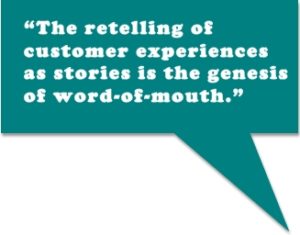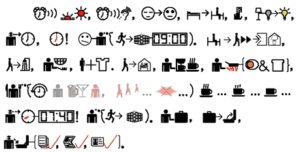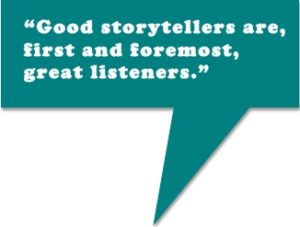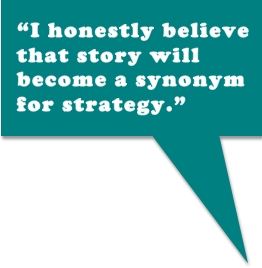A couple of weeks ago, I “attended” another one of Terrence Gargiulo’s fantastic webinars. As I’ve written before, these webinars are always so well done. So professional. None of the technical glitches and fumbling around I so often see in other webinars — and trust me, I’ve attended a lot of webinars in the last year. Great slides. Bonus handouts. And Terrence is so respectful of attendees’ time with his concise, 40-minute sessions. Did I mention that Terrence’s webinars are free? You just can’t beat that, and if you are interested in storytelling and communication, you must try one of his webinars. (And wouldn’t it be silly of me to rave this much without directing you to his Web site?)
Anyway … his webinar two weeks ago had the added value of a special guest, Madelyn Blair, a superb presenter and a force of nature.
Madelyn talked about how to keep knowledge current, the subject of her upcoming book, Riding the Current , which she also touched on in her Q&A with A Storied Career:
, which she also touched on in her Q&A with A Storied Career:
I hope to use story to help people discover ways in which they can keep their knowledge current. We live in a world where information and knowledge comes at us at a pace that can’t be absorbed. Moreover, we are able to go after specific knowledge with an ease that has never before been offered. Yet, how to manage this barrage? Through the use of story, I hope to show that there are many, many ways in which individuals, teams, even organizations can keep themselves appropriately current. … it is a book filled with the stories of people who have figured out how to do this along with a process for the reader to create what works best for them.
It really is ironic, isn’t it — that we have more information than ever coming at us, but that deluge makes it harder to stay current. I’ve felt that especially since I’ve been engaging in hardcore Twittering. I find myself constantly having to make decisions about how much of the info that comes at me I actually need to learn to stay current. In addition, I have diverse interests and professional areas in which I need to keep current. Readers here see my attempts to keep up with the storytelling side. But then there’s the huge part of my professional life dedicated to helping folks manage their careers. And lots of other stuff …
In a wonderful chapter from Riding the Current that Terrence shared with webinar participants before the webinar, Madelyn suggests some excellent ways. One is the concept of the Practice Partner, someone whose role is to “help create and hold for you a climate in which you can think and learn. In this climate, the Practice Partner is willing to listen carefully to your thoughts, ask questions to help you explore them more deeply, encourage outlandish ideas, praise your successes, and give you time to finish your sentences.”
The other suggestion that especially resonated with me came in an after-webinar handout (yes, Terrence and Madelyn provided an embarrassment of riches) in which Madelyn tells her personal story of setting boundaries for the areas she felt she needed to keep current on. She started with a list of forces that affected her business. Next was a list of the areas she truly enjoyed. She then took these two lists and stripped them down the topics that built on each other or supported a trend relevant to her. What a great technique. Can’t wait to put that one into practice.
Heck, I can’t wait to read the whole book.
[Image credit: Seaside (CA) Art Gallery, Boat on Ocean, Dan Beck: http://www.ci.seaside.ca.us/Art_Gallery.html]
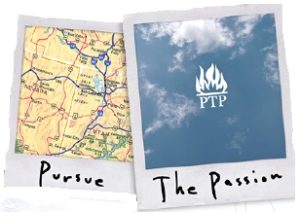 convey the way folks talk about their careers on the site. But it is through story that they communicate their passion for their careers. The purpose is to open minds to career paths they might not have previously considered:
convey the way folks talk about their careers on the site. But it is through story that they communicate their passion for their careers. The purpose is to open minds to career paths they might not have previously considered:
